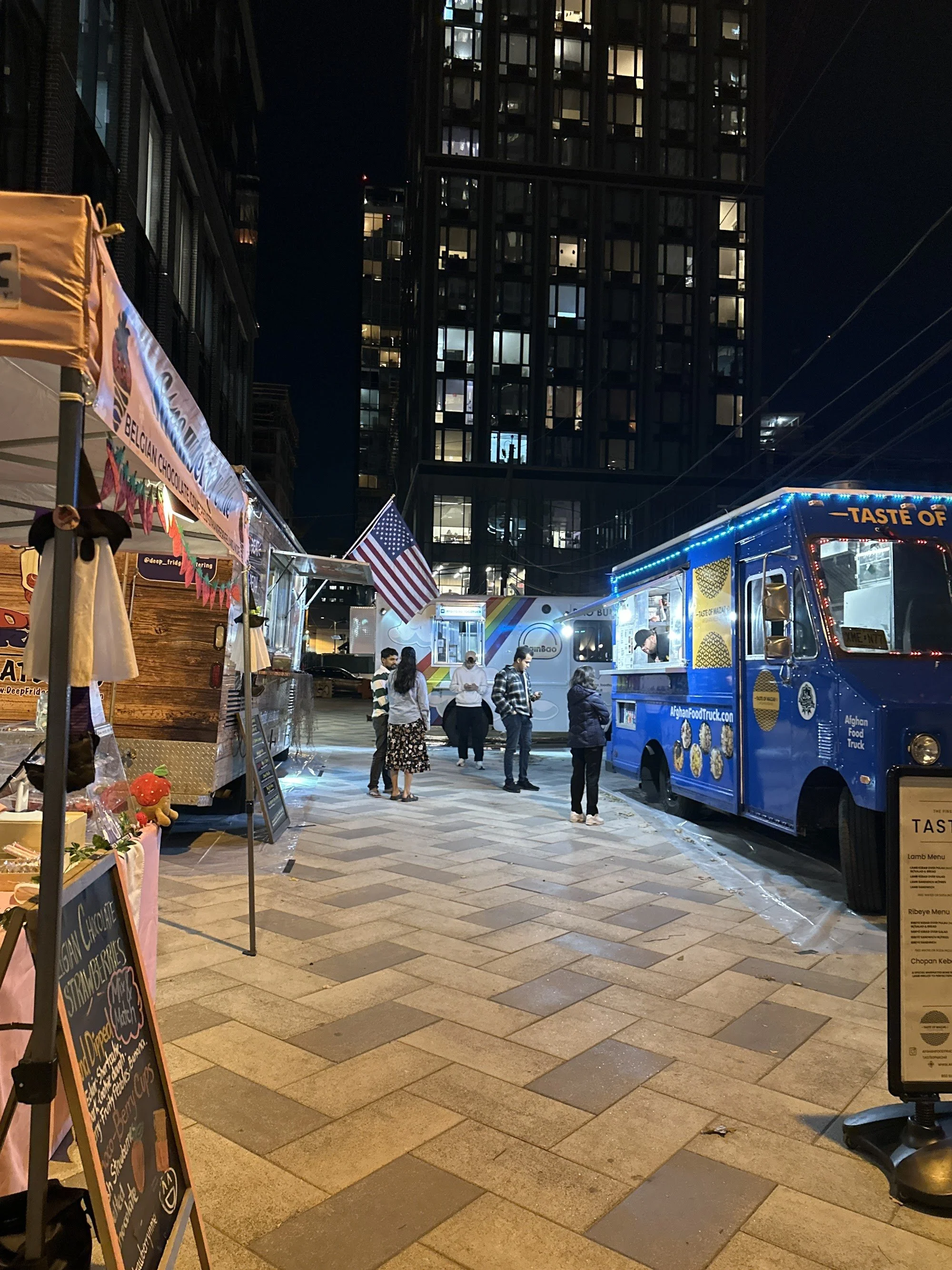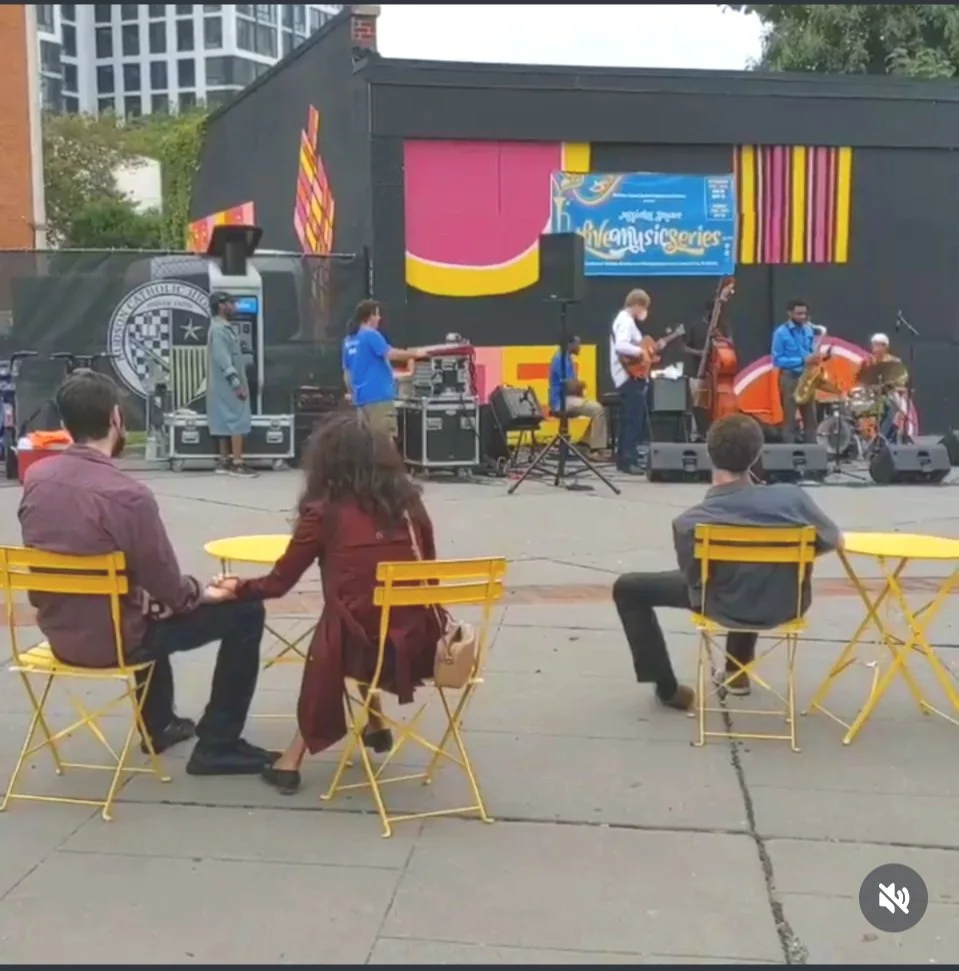PROGRAMMING
Programming a space involves coupling the best attributes of the space itself and then coupling the staging of an event that can happen there consistently without reinventing the wheel each time.
Programming begins with mapping out the space, working on the logistics of what can first get in and out and what can operate there. If a food truck can’t get around bollards, then there won’t be any trucks.
Permitting and managing ongoing inspections of a standing event. Food vendors in particular need to maintain their insurance coverage and keep their workspaces clean.
Standing events also need established schedules for staffing of setup, cleaning during the event, and break down of the site at its conclusion.
Publicity is key, especially at the inception of programming, as it takes time for the public to learn of an event, attend and remember when to return. Social media (IG, FB, TickTok, websites) and influencers help, as does more conventional methods like door hangers, posters on swing stands, flyers, and stenciling using chalk-based paints.
For the Homestead Food Truck Fest (see right picture) , which operated during the summer of 2024, each week, lighting, seating, music, garbage cans, food trucks, and inflated LED arches would be set up to draw in residents week after week. Attendance grew from a few hundred to more than 1,100 by the conclusion of the season.
Food Truck PArking
At the Office of Innovation, food trucks would apply via an electronic application, and spaces would be assigned based upon locations set by City ordinance, which Innovation had revised, collaborating with the Law Department, elected officials, neighborhood groups, and business associations.
Then, Innovation would partner with Special Improvement Districts, police, fire department, parking enforcement officers, and health inspectors to ensure food trucks were parking where they should, and keeping their operations clean and safe for the public.
This process would repeat annually for three years until the City placed management of food truck parking within the Health Dept.
McGinley Square Plaza Activation
McGinley Square Plaza had been a forgotten public space, with weeds, graffiti, and a lack of seating making the space little more than a slab of concrete with empty tree pits.
First, The Office of Innovation renovated the space with new landscaping, fresh paint over the graffiti-covered empty newsstand kiosk, planters placed over the empty tree pits, a new mural, and green paint over most of the concrete surface.
Next, food trucks were scheduled and musicians hired for a summer music series to draw people back to the overlooked plaza. The City installed air conditioning in the kiosk and a local plant vendor that didn’t have a storefront was brought in to augment foot traffic to the public space.
The Office of Innovation also applied for and won a $50,000 grant to research how to repurpose a closed retail bank branch that had been shuttered since the 1990s.
Farmers market at journal square
The Farmers Market at Magnolia Landing had to be relocated from where it had operated for years to a new plaza that most people didn’t know, called Magnolia Landing. On top of that, the number and variety of vendors in previous years was uninspiring.
Festoon lighting was added, new vendors were recruited including food trucks, swing signs were stationed in the new plaza permanently, and tents were added to offer shade and protection from rain, and water weights were employed to keep the tents in place were gusts whipped up to 20 mph and send tents airborne. DJ Jen Jones and Rock-it Docket (AKA “Dancing Tony”) were brought in for atmosphere.
QR codes on cafe tables collected feedback from customers, and foot traffic was tracked with an old fashioned counter, growing foot traffic to more than 1,200 per week from a few hundred when the new season began at the new location.
POPUP JACKSON HILL
ttt
PopUP Jackson Hill was a project Eric inherited that had been stalled for two years due to an encroachment on the lot where the project was to be located. Resolving this issue, Fleming then worked with architects, planners, engineers and City staff to conceive, design, and build four stand-alone store fronts that aspiring entrepreneurs could rent for a nominal amount, operate their businesses, while learning about bookkeeping, marketing and other essentials through partnerships with local colleges and other non-profit entities like Jersey City Economic Development Corp.
Fleming also organized food trucks at the site, music, and other events to lure passersby to the storefronts.











